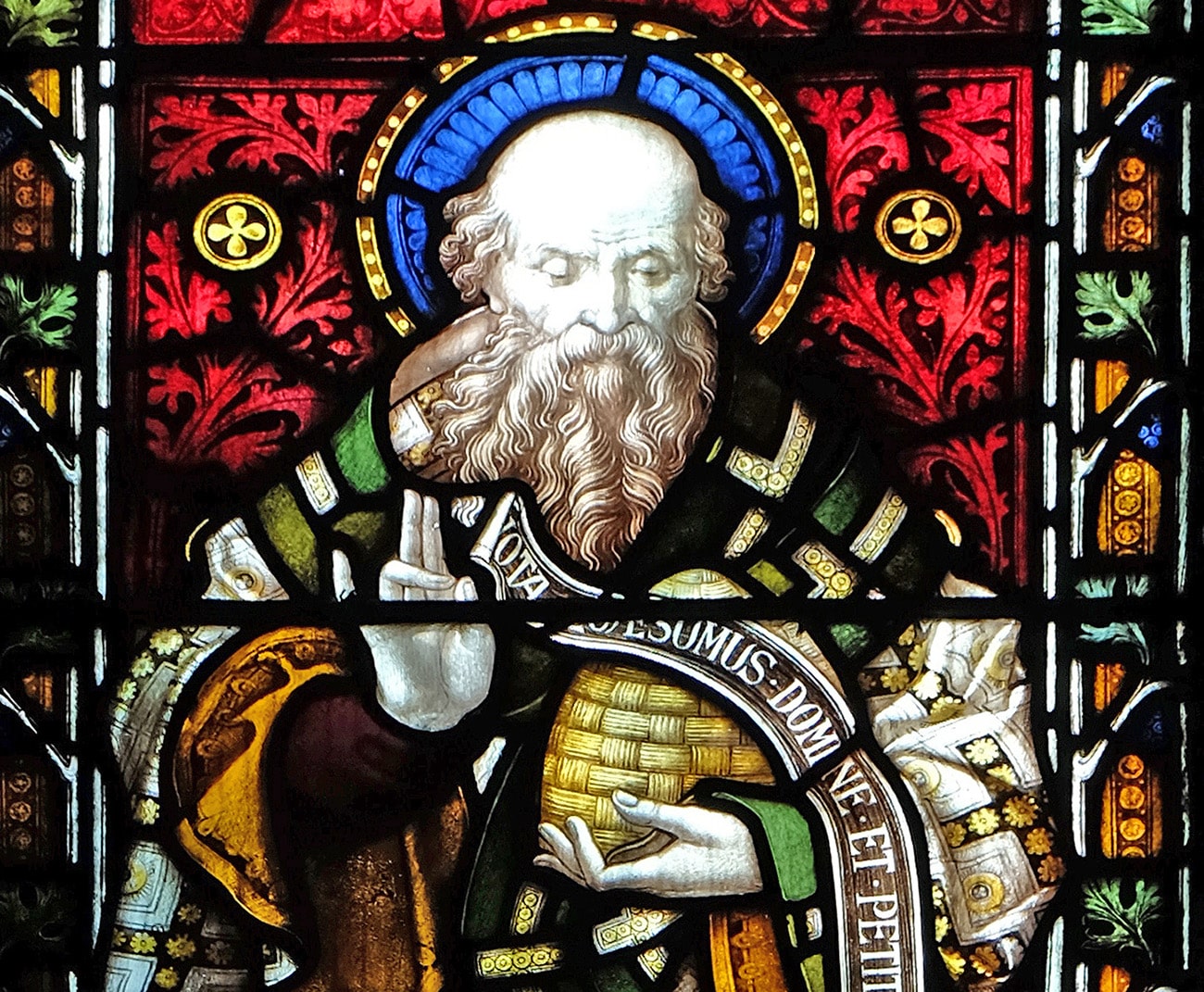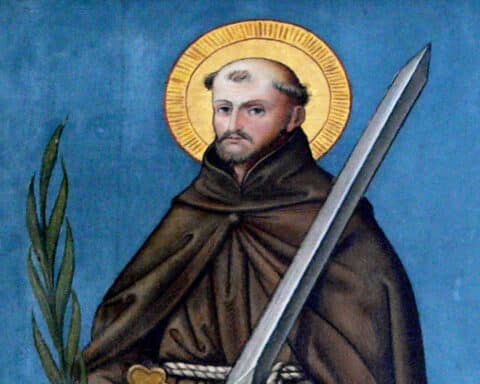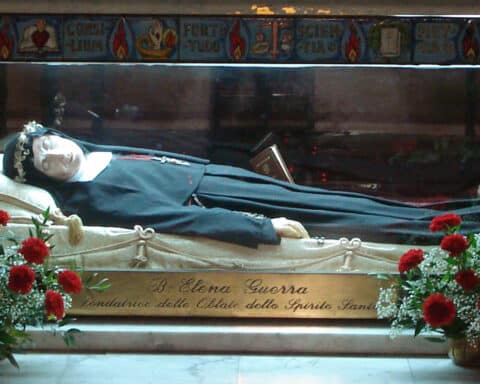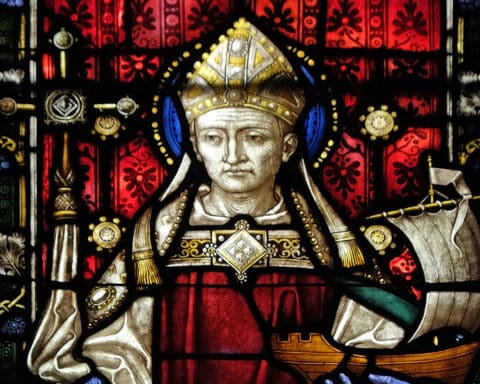No saint (outside the Bible) is more associated with the festival of Easter than St. John Chrysostom.
On Easter morning, every church that uses the Byzantine liturgy — whether the church is Catholic or Orthodox — proclaims aloud a “paschal sermon” attributed to John. Amid the sermon is a series of statements beginning with “Christ is risen!” — to each of which the congregation responds, “Truly he is risen!“
Throughout the feast, Eastern Christians greet one another with those two lines.
The brief sermon that contains them is beautiful, exuberant and poetic, in keeping with the celebration.
It is announced as the work of John, and it is the best-known work that bears his name. And John is often described as the most brilliant preacher in Christian history.
The problem is he probably didn’t write the paschal sermon. Scholars who have devoted their lives to the study of Chrysostom are almost unanimous in this judgment. It is certainly ancient, but it seems to have been preserved anonymously at first and then, centuries later, filed as a fragment among Chrysostom’s papers — simply because it was a sermon worthy of his genius.
Nevertheless, Chrysostom surely merited his association with Easter. He deserves to be the Easter saint — though not for the reasons he is actually celebrated as such.
His ministry was neatly bookended by two Easter liturgies, the first in A.D. 387 and the last in 404. And the arc in between those days has a paschal shape. They trace the course from his own Palm Sunday to his personal, sorrowful Good Friday.
The making of an eloquent preacher
John was born around 349 and raised by his devout mother, who was widowed shortly after the birth of her only child. His father had left enough of a legacy to ensure that his son received the best education available in Antioch. In his youth, John was trained by Libanius, an advisor to emperors and the greatest living rhetorician. Years later, Libanius was reported to have named John as the student most qualified to be his successor as a celebrity in the field of rhetoric.
But John didn’t want a career. He wanted to be alone with God. So he went off to live with the hermits on nearby Mount Silpius. There he prayerfully read the Scriptures all day, committing them to memory, and then continued to study them through the night, reading by firelight with his arms outstretched to ward off sleep. Doing this, however, he destroyed his health and had to return to the city.
The local bishop saw the opportunity providence had handed him and soon ordained John to the diaconate and then the priesthood. John’s special assignment was preaching from the cathedral in Antioch, one of the most prestigious pulpits in the world.
In ordinary times, Antioch was a city and a church to be watched — a trendsetter, and a world leader in business and culture. But John’s tenure in the cathedral was anything but ordinary. He found himself immediately amid a social crisis, chaotic and life-threatening, with all the citizens of Antioch — Christians, pagans and Jews — looking to John and keen to have his wisdom and guidance.
The world, it seemed, was watching John, and he didn’t disappoint.
The crisis was most grave. The emperor Theodosius, ruling in distant Constantinople, levied new and heavy taxes that would affect everyone in Antioch. People took to the streets in protest, and the demonstration soon erupted into a riot. Impelled by rage, a few men rushed to the city center and pulled down statues of the emperor Theodosius and his whole family. The rabble cheered and then dragged the statues around the city, mocking them and damaging them.
It was an act of treason, punishable by death. In law, the emperor’s statue was the same as his person. To attack his statue was to attack the man. When citizens rioted, moreover, the whole city could be held responsible for the actions of a few. The emperor would be within his rights to order a massacre. Indeed, the quick-tempered Theodosius would do just that, a few years later, when he had 7,000 Thessalonians summoned to the theater and then slaughtered in their seats.
Dragging the statues had seemed like a fun idea at the time. But, the morning after, the people of Antioch saw clearly that their doom was inevitable. The only question was when retribution would come to their city.
Soldiers began to round up suspects and torture them. Some were executed. The wealthy fled town.
The only citizens who remained were those who were too poor or feeble to leave, those who had nowhere to go or those whose family members were imprisoned.
This remnant thronged to the cathedral. Everyone, regardless of religion, knew that the new preacher there, John, owned the only voice capable of making sense of their predicament.
He preached a series of sermons to them. In the second, he paints a vivid picture of Antioch: “Once there was nothing happier than our city; there is nothing sadder than what it has become now. … Our city has become ‘like an oak whose leaf withers’ (Is 1:30). … The help from above has forsaken her, and she stands desolate, stripped of almost all her inhabitants.”
Having acknowledged the pain of his people. He consoled them, but he also led them to see the gravity of their sins and vices — their lack of self-control, which had caused this crisis and brought down the wrath of God in the displeasure of the emperor.
Nevertheless, he explained that God is merciful, and so the people had reason to hope. John’s rhetoric amplified the moods of Antioch at all their extremes. Many unbelievers, we are told, came to faith from his preaching.
While John was in the pulpit, the elderly bishop of Antioch, Flavian, made a hasty trip to the capital to plead with the emperor on the city’s behalf. The journey was more than a thousand miles each way. John preached on, dazzling day by day.
Word from Flavian arrived just in time for John to proclaim from the pulpit on Easter Sunday: The emperor had relented. The city would be spared.
John’s final sermon in the series was exuberant — with the joy of Easter and the giddiness of the sudden assurance of survival.
It was nonetheless nuanced, and John implored his people to retain the lessons they had learned in adversity: “You decorated the market with garlands. You put lights out everywhere. You spread greenery in front of the shops. You celebrated as if it were the city’s birthday! Now do this in a different way for the rest of time. Crown yourselves with virtue instead of flowers. Light up your souls with good works. Rejoice with a spiritual gladness. And let us never fail to give thanks to God constantly for all these things — not only that he has freed us from these calamities, but also that he allowed them to happen.”
These were the sermons that made young John justly famous. They earned him the nickname “Golden Mouth,” which in Greek is Chrysostomos. The sermons circulated in transcriptions and soon were translated into Latin. They even reached the emperor and his court, making a deep impression.
Pressing on through Lent and Holy Week
In the ancient Church, it was the misfortune of great preachers to attract attention in seats of power. Inevitably, in 397, John was summoned to the capital, which was an adder’s nest of intrigue, cliquishness and envy.
He was loathed by churchmen who had been passed over for the job. They schemed to bring John down — by kangaroo councils and backdoor deals with well-placed bureaucrats. And they succeeded.
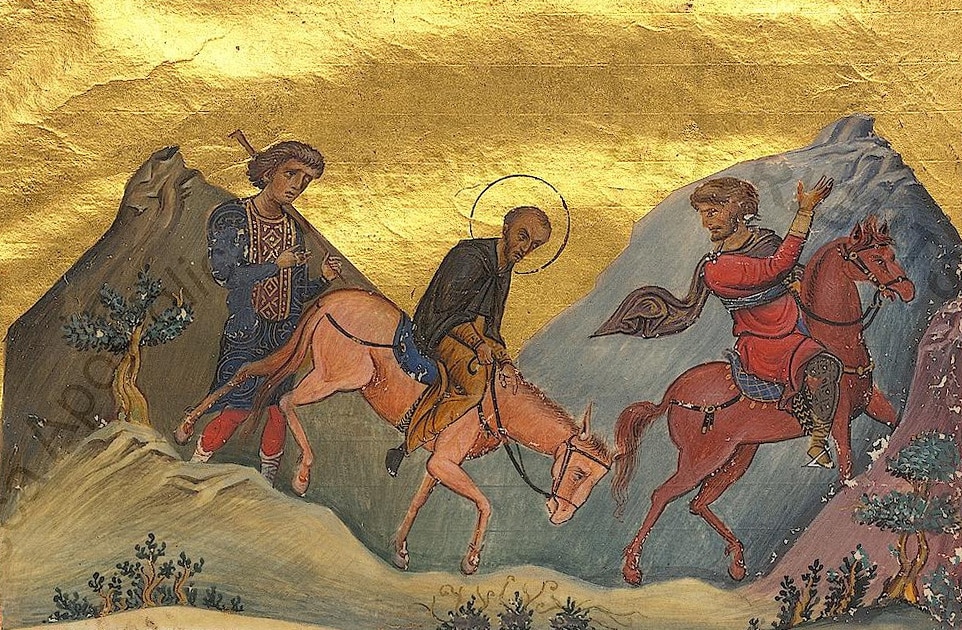
The emperor ordered John to relinquish all priestly duties and cease celebrating the liturgy. John refused. The emperor ordered all the churches in the capital to bar John’s entry.
But John pressed on through Lent and Holy Week. He made plans to conduct the season’s customary baptisms in the public baths on the Easter Vigil.
That night, the rites were interrupted by a sudden military intervention. Witnesses said the baptismal waters ran red with the blood of the new Christians. Soldiers drove the congregation away and arrested John.
In 404, he was exiled to Armenia, but his devoted people — from Antioch and Constantinople — made a pilgrimage there to see him. Furious, the emperor sent John to a more remote and wretched place. He was forced to make the journey on foot. He died on the way in September of 407.
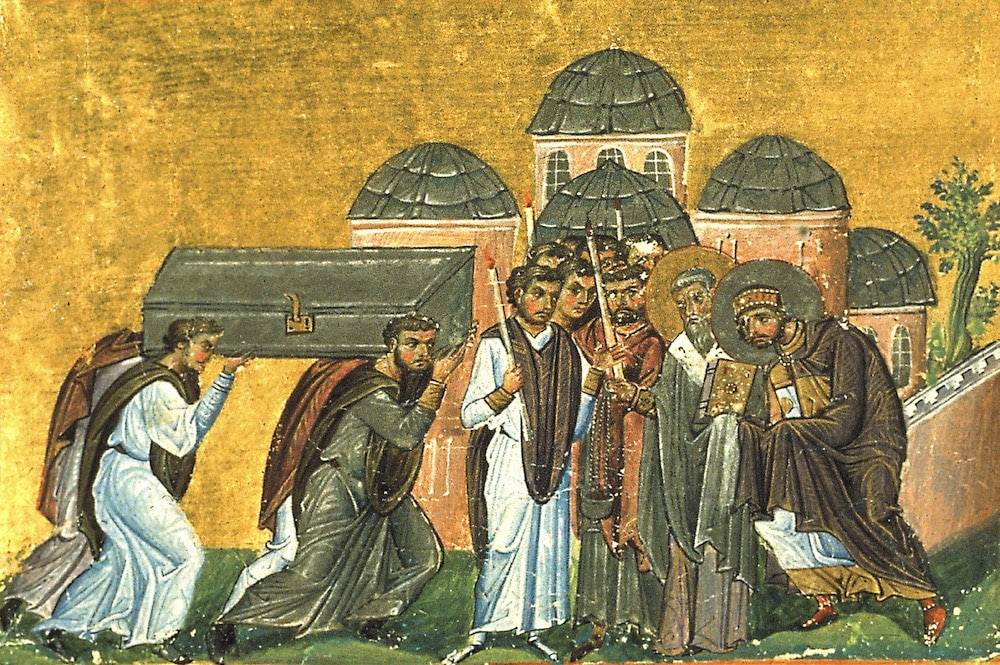
John’s final witness rang out as eloquently as his words ever had. His death was widely seen as a stain on the imperial household. When his relics were returned to the capital in 438, the emperor Theodosius II, heir to the monarch who had condemned John, humbled himself before the saint’s casket and begged forgiveness.
John had known the praise of Palm Sunday and the desolation of Good Friday.
His Easter glory continues in our own time, as his words of his “Golden Mouth” still resound and inspire.

